Yogyakarta batik or batik jogja is part of Javanese culture. Each of these batik motifs that exist in each region, has its shape and meaning. The motifs and shapes reflect the philosophy of life of the surrounding community. Yogyakarta Batik has its own variations. Traditional batik in the Yogyakarta palace environment is characterized by the appearance of a strikingly clean white base color. The geometric patterns of the Yogyakarta palace are very distinctive, and large, and some of them are enriched with machetes and nitik. Yogyakarta batik cloth motifs include the following:
- Ceplok Motif, Grompol
This ceplok batik motif includes a variety of geometric designs, usually based on circular rosettes, stars or other small shapes, forming an overall symmetrical pattern on the Yogyakarta batik fabric. Grompol in Javanese vocabulary means to gather or unite. It symbolizes the hopes of parents for all good things gathered, namely fortune, harmony in life, happiness, and peace for the bride and groom and the bride’s family. In addition, grompol also means hope, so that the bride and groom can gather as one or to remember their extended family wherever they go. Another hope is that all relatives and invited guests can unite so that the wedding party goes lively.
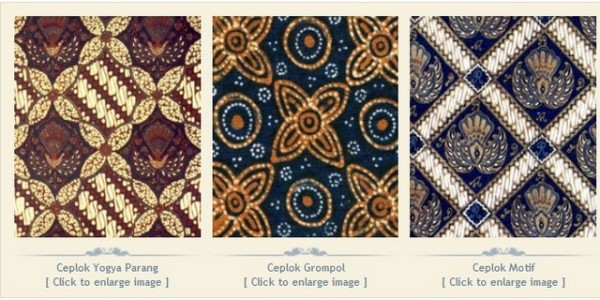



- Kawung Motif
Yogyakarta batik motif kawung in the form of 4 circles or ellipses shaped around a small circle as the center, with an elongated arrangement according to a diagonal line sloping to the left or right alternately. Symbolizes the 4 directions of the wind or energy sources that surround the axis of the center of power, namely: east (sunrise: symbol of the source of life), north (mountain: symbol of the abode of the gods, place of spirit/death), west (sunset: descending luck) ) south (zenith: top of everything).
In this case, the king is the center or epicenter surrounded by his people. The kingdom is the center of arts and culture, science, government, religion, and economy. The people must obey the center, but the king also always protects his people. Kawung also symbolizes the simplicity of a king who always puts the welfare of his people first. Yogyakarta batik motif kawung also means a symbol of justice and prosperity.
Some people think that kawung is a type of palm or sugar palm tree with fruit that is oval, slightly clear white called “kolang-kaling”. Another opinion says that kawung is a form of lotus sterilization (Lotus) which means sacredness and holiness. In classical times (Hindu-Buddhist influence), the lotus was a symbol of the gods. Therefore, the kawung motif of Yogyakarta batik can be interpreted as everything pure, and holy, from white back to white. In essence, we can conclude that the kawung motif is round, oval, or elliptical.



- Parang Motif
Yogyakarta batik machete motif is commonly referred to as the keris batik motif or sword pattern by the international community. While in Javanese society, it is usually called the Parang Tongue of fire motif or the tongue of fire. Parang is one of the strongest batik motifs among other existing batik motifs. The machete motif is in the form of firm lines arranged diagonally in parallel. The machete motif itself developed and gave rise to other motifs such as Parang Rusak, Parang Barong, Parang Kusuma, Parang Pamo, Parang Klithik, and Slope Sobrah. Because the creator was a founder of the Mataram Palace, then by the kingdom, the machete motifs could only be used by the king and his descendants and could not be used by ordinary people. This type of batik was then included as a group of “ban batik”.
When viewed in depth, the curved lines of Yogyakarta batik with parang motifs are often interpreted as ocean waves which are the center of natural energy, in this case, the king is meant. The composition of the slope on the machete motif also symbolizes authority, power, greatness, and fast motion so that the wearer is expected to move quickly. According to Mari S Condronegoro, at the time of Sri Sultan Hamengku Buwono VIII, the machete motif became the main guideline for determining a person’s degree of nobility and became a guideline contained in the Pranatan Dalem asmanipun Panganggo Keprabon Wonten Kraton Nagari Ngayogjakarta Hadingningrat in 1927. Batik Prohibition motifs at that time were Semen, Udan Liris, Sawat, and Cemungkiran motifs,” he explained.
- Parang Barong, was created by Sultan Agung Hanyokrokusumo as a representation of the experience of a spiritual journey as a King with all his duties and obligations, as well as self-awareness as a human being who is in the wrong place before the Creator. The word barong itself means something big, in this case, it is represented by the shape or size of the cloth as well as the large machete barong batik motif. Parang Barong is the father of all types or patterns of machetes where the barong motif used to only be worn by a king. This barong pattern has the meaning for a king to always be careful in deciding everything and be able to control himself.
- Parang Rusak, worn by the royal family on state occasions, Parang Rusak symbolizes a struggle in humans to fight evil by controlling oneself against a desire to become a wise and noble person.



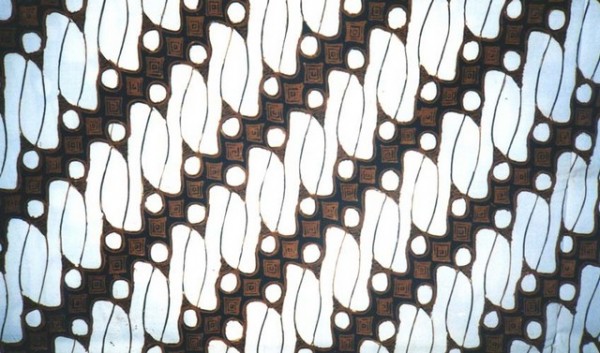

- Lereng Motif
Yogyakarta batik with a slope motif in the form of a diagonal row pattern between the machete motifs. In addition, many patterns are simply rows of narrow diagonal lines filled with entire slopes of small patterns. Yogyakarta batik with a slope motif is an old pattern of prayer provided for the royal family. One of the slope motifs that is often encountered has lyrical shrimp (light rain). Yogyakarta batik slope motif symbolizes fertility, hope for prosperity, determination, to have the courage to carry out what is important to the nation and people.



- Nitik Motif
Yogyakarta batik motif nitik comes from foreign influences that developed on the north coast of the Java Sea until finally developing also in the interior into a very beautiful motif. When traders from Gujarat arrived on the north coast of Java, their merchandise contained woven fabrics and typical Gujarati silks. The motifs and fabrics are geometric and very beautiful, made with a double ikat technique called “Patola” which is known in Java as “cinde” cloth. The colors used are red and indigo blue. In addition to consisting of squares and rectangles, Nitik from Yogyakarta is also beautified by the presence of other batik isen such as, cecek (cecek 7, cecek 3), some are even given batik ornaments by including klowong and Tembokan, so that their appearance is both in shape and form. the color is different from the Jlamprang Pekalongan motif.
Yogyakarta batik motif nitik uses indigo, soga (brown) and white colors. Like other batik motifs from the Kraton, the Nitik motif created by the Kraton also develops outside the Kraton walls. The Yogyakarta Kraton neighborhood which is famous for its beautiful Nitik motif is Ndalem Brongtodiningrat. In 1940, Brongtodiningrat made a document on mori in the form of batik kelengan and fifty-six Nitik motifs. Since about 1950 until now, the batik making Nitik batik is Wonokromo Village near Kotagede.
Like other batik motifs, Yogyakarta Batik cloth with nitik motif also has a philosophical meaning, for example, nitik claw which is often used in traditional wedding ceremonies. It is so named because the motif has an ornament shaped like a claw. The claws in question are chicken claws or lower legs. These claws are used by chickens to scavenge the ground looking for food or something to eat. The nitik claw motif is worn during traditional marriage ceremonies so that a married couple can earn a living lawfully as well as a chicken looking for food with its claws. Nitik claw can stand alone as a motif and one cloth or as part of certain cloth motifs, such as the Wirasat or Sidodrajat motifs, which are also often used in traditional wedding ceremonies.

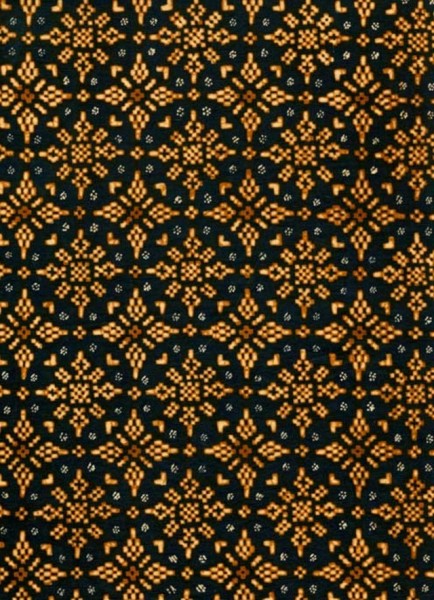
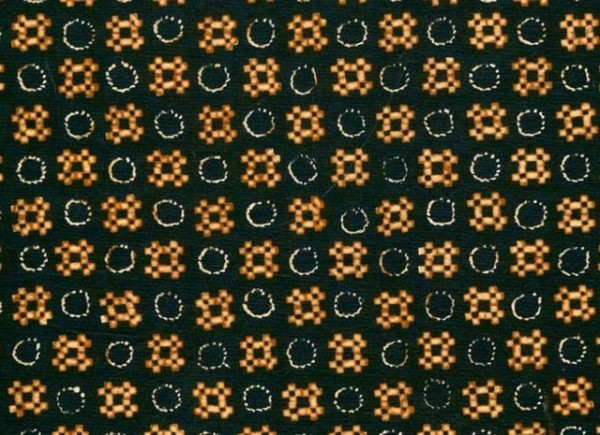
- Truntum
Yogyakarta batik truntum motif created by Kanjeng Ratu Kencana (Empress Sunan Paku Buwana III) means love that grows back. He created this motif as a symbol of sincere love without conditions, eternal, and the longer it feels the more fertile it grows (tumaruntum). Because of its meaning, the truntum motif of Yogyakarta Batik cloth is usually worn by the parents of the bride and groom on the wedding day. The hope is that the love of the bride and groom will grow more tumultuous. Sometimes it is also interpreted that parents are obliged to “guide” the bride and groom to enter a new life.

- Semen Motif
Yogyakarta batik motifs of cement are interpreted as a description of a “blooming life” which is a life that describes prosperity and development for the better in a positive context. The main ornaments on cement motifs have several types, namely:
- The first is ornaments related to land, for example, flora aka plants or fauna with four legs.
- The second is ornaments related to air, for example, fauna such as the eagle, and mega cloudy clouds.
- While the third is ornaments related to the ocean or water, such as fish, snakes, and frogs. This type of ornament most likely has something to do with the understanding of the Three Realms or Tribawono. This understanding is a teaching about the existence of 3 worlds, namely; the sky world which is inhabited by the gods and the sacred, then the middle world which is where humans live, and the underworld which is where humans choose a way of life filled with wrath.
In addition to this meaning, the Yogyakarta Batik cloth with the cement Rama motif (Javanese: Semen Romo) itself is often associated with the Ramayana folklore which is full of Hindu teachings, namely Hastha Brata or the teachings of virtue through eight paths. This teaching was the main advice or advice from Romowijoyo to Wibisono when he was crowned the king of Alengka in the king. The conclusion is that the “Semen Romo” motif contains a teaching regarding the main qualities that a king or leader of the people should have.

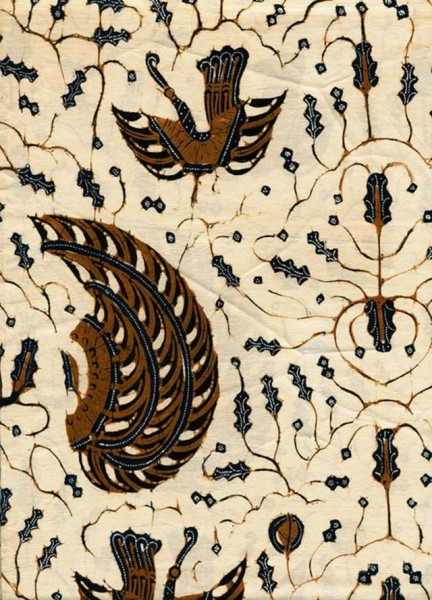

- Gurda(Garuda) Motif
Yogyakarta batik with gurda or garuda motifs is generally combined with other batik motifs such as sawat batik motifs and is known as sawat gurdo. The Gurda motif is easier to understand because, besides its simple shape, the picture is very clear because there are not too many variations. The word gurda comes from the word garuda, which is the name of a type of large bird which according to the Javanese view of life, especially Yogyakarta, has a very important position. The shape of this gurda motif consists of two wings (lar) and in the middle, there is a body and tail. According to the people of Yogyakarta, this bird is considered a sacred animal.
In the story of Batara Vishnu’s ascension to Nirvana by riding a Garuda bird. This bird is considered a steadfast bird that arises without maguru, which means magic without being studied by anyone. As for the story about the origin of Garuda as the vehicle of Sang Hyang Wisnu, according to one informant, it started when there was a war between Garuda and the gods. In the war the gods could be defeated, so they asked Sang Hyang Vishnu for help, who then met the Garuda bird. At the meeting, there was a debate between the two. Because the gods have experienced defeat, the Garuda bird proposes that the gods submit any request which will later be granted by Garuda. Finally, Sang Hyang Vishnu requested that Garuda be willing to be his mount to take him back to Heaven Loka (the abode of the gods).
According to the opinion of the people of Yogyakarta, Sang Hyang Wisnu is often referred to as Sang Surya which means the sun or the sun god. Based on the above events, finally, Garuda became the mount of the Sun God, then Garuda was also used as a symbol of the sun. Apart from that, Garuda is also considered a symbol of masculinity. The rationale is that, because Garuda is a symbol of the sun, Garuda is seen as the main source of life, as well as a symbol of masculinity, and is expected to always illuminate human life in the world. This is probably why the people of Yogyakarta embody this sacred bird in the gurda motif of Yogyakarta Batik cloth.

- Isen Motif
The filling pattern called Isen is very characteristic of Indonesia, especially Javanese, batik. Subtly rendered in waxy lines, this small design adds beauty, depth, and harmony to the overall fabric. Yogyakarta Batik cloth with Isen motif consists of main ornaments and filler ornaments. Yogyakarta batik cloth with Isen motif is in the form of dots, lines, a combination of dots and lines that function for ornaments from motifs or filling fields between these ornaments. There are various kinds of Isen Batik fabrics in Yogyakarta that are still developing, such as cecek, cecek pitu, melik scales, cecek sawut, cecek sawu leaves, scales gringsing, galaran, rambutan, sirapan, chopped gori, and so on.

Yogyakarta written batik has grown very rapidly until today it has been named the world’s batik city and here are some batik brands that are quite popular in Yogyakarta, namely Yogyakarta home batik, Roro Jonggrang batik Yogyakarta, Soenardi batik Yogyakarta, Danar Hadi batik Yogyakarta, Wisnu batik Yogyakarta, batik Margaria Yogyakarta, Rosso Batik Yogyakarta, Pangestu Batik Yogyakarta.
Bibliography of Yogyakarta Batik Motif
- Batik Winoto Sastro, http://www.winotosastro.com/batik/batikyogya.html
- Museum Batik, http://jv.wikipedia.org/wiki/Mus%C3%A9um_Batik_Yogyakarta
BATIK YOGYAKARTA
BATIK YOGYAKARTA